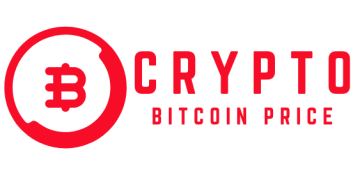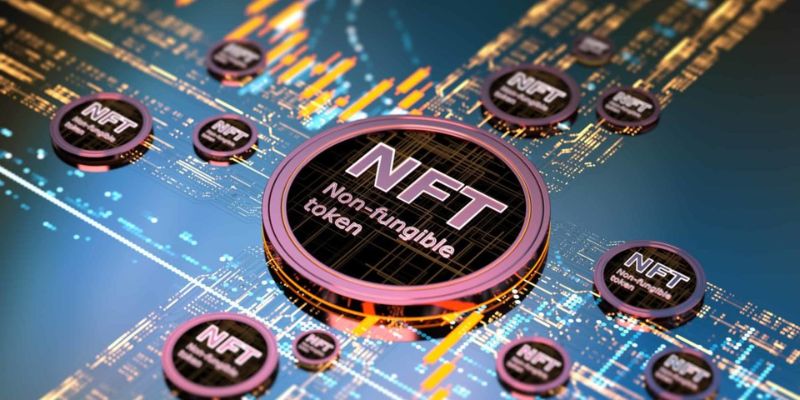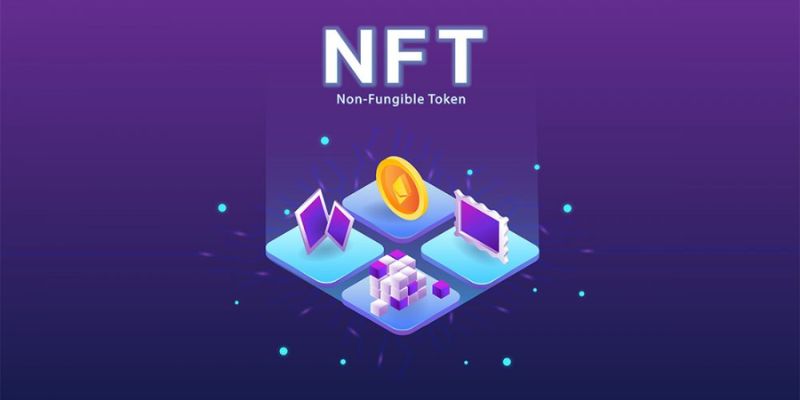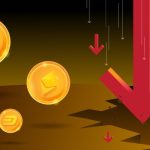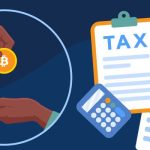Have you ever asked yourself, “What is a non-fungible token (NFT)?” You’re not alone. These digital marvels turn heads with their big price tags and famous fans. They’re one-of-a-kind assets that you can’t swap like a dollar bill. Imagine owning something unique, and it’s just yours – that’s an NFT. Sure, the name might trip you up, but think of them as collectible digital art pieces, each with their own special ID. NFTs live on a system that keeps them safe and sound, so no one can claim your digital treasure. Welcome to the world of NFTs, where we decode the tech talk and show you why they’re making waves.
Demystifying NFTs: Understanding the Basics
What is an NFT? Defining the Non-Fungible Token
Let’s talk about NFTs—like your one-of-a-kind baseball card, but digital. NFT stands for “non-fungible token”. “Non-fungible” means it’s unique—you can’t swap it for something else. It’s not like a dollar bill where any dollar is like another. Imagine you have a drawing—digital or on paper. Now, also imagine that drawing is the only one ever made. That’s kind of like an NFT, except it’s not just about drawings! It could be any kind of art or collectible. Also, you can show it’s really yours with some cool tech. That’s an NFT!
Now, here’s where it gets pretty neat. When you have an NFT, you own a digital item that nobody else has. Each one has info to tell it apart from all others. Think about digital artists: they can make art that’s hard to copy exactly because of NFTs. It’s not just for looking cool on the internet. You can sell these NFTs, and sometimes, they’re worth lots of money.
How NFTs Work: Blockchain Technology and Smart Contracts
You’re probably asking, “But how do those digital things work?” Well, it’s all about the blockchain. Think of blockchain like a magic notebook that never lies. When someone makes an NFT, that magic notebook writes it down for everyone to see. Next time someone else has it, the notebook gets updated again. This happens every time it moves from person to person. It’s all thanks to Blockchain.
Now, smart contracts are the rules that NFTs follow on the blockchain. Imagine if your toys could talk and make deals with your friends’ toys all by themselves—it’s a bit like that. Smart contracts are these rules your digital items follow without you having to do anything.
Smart contracts also keep an eye on things to make sure everyone plays fair. They can also make sure artists keep getting paid when their art gets sold again and again. It’s like saying, “Hey, thanks for making this!” every time it finds a new home.
This is just the start of how NFTs work. People buy and sell them, sort of like trading cards, but make sure to do it safely. You can find places online, called NFT marketplaces, to do all this buying and selling. Also, because this is all pretty new and special, be ready to learn lots of new stuff. Welcome to the world of NFTs! Now, every time you hear someone say “NFT”, you’ll know what’s up!
The Artistic Explosion: NFTs and Digital Creativity
Digital Art and NFTs: A New Frontier for Artists and Collectors
In the world of art, a big change has happened. Digital artists and collectors are now meeting in a new space made possible by NFTs. NFTs, or non-fungible tokens, are unique digital items you can own and collect. Each NFT is like a collectible card, but for the digital age. They work on a system called blockchain technology, which keeps record of who owns what.
You might hear the word “non-fungible” and wonder what it means. It just means each NFT is one of a kind. Like your favorite toy or a signed baseball card, you can’t swap it for something exactly the same. This makes each NFT special and often valuable.
The things you can make into NFTs include drawings, music, or even tweets! Digital art and NFTs are a perfect match. Artists use NFTs to sell their art online. This lets them reach fans all over the world. For artists, this is super exciting. They no longer need galleries or auctions to sell their work. With NFTs, they can sell art directly to anyone who is interested.
But this isn’t just great for artists. Collectors also love NFTs. They know the art they buy is real because of blockchain. No fakes, just real digital art. They also like that they can show off their collection online. For some collectors, buying NFTs is not just about art. They see it as a way to invest in something that might grow in value.
The Process of Minting NFTs: From Creation to Crypto Art
When an artist makes a digital picture, it’s just a file on a computer. To turn it into an NFT, they have to “mint” it. Minting an NFT is like making a coin. The artist creates a smart contract on a platform like Ethereum, one of the biggest places for NFTs. This contract is a set of rules saying how the NFT can be used and traded.
This process turns the artist’s work into crypto art. Now it’s part of the blockchain, and people can buy and sell it as NFTs. When someone buys it, the smart contract makes sure the artist gets paid. Sometimes, the artist even gets a bit of the money if the NFT is sold again later. That’s called a royalty.
To mint an NFT, artists usually pay a fee with cryptocurrency. This fee covers the energy the computer network uses to add their NFT to the blockchain. Once on the blockchain, the NFT is out there for everyone to see. No one can claim they made it because the real artist’s name is right there.
Minting has become a new way for artists to make money. But it’s not just about cash. It’s about sharing their work in a way that’s safe and secure. It’s also about being part of a cool new art scene. This scene is all about digital items that could be more rare and treasured as time goes on.
NFTs bring together art, technology, and ownership in a fresh way. They are changing how we think about owning things in the digital world. And as more people learn about them, this new form of art only grows. NFTs are not just a fad. They are a new step in how we create, buy, and enjoy art.
Navigating the NFT Marketplace: Buying, Selling, and Trading
Finding Value: How to Buy and Sell NFTs Responsibly
Let’s talk about buying and selling non-fungible tokens, or NFTs. If you’re new here, think of an NFT as a one-of-a-kind digital key. It’s proof you own something really special, like digital art, on the internet. When you buy an NFT, you’re saying, “This unique thing is mine!” Crazy, right?
Now, how do we get our hands on these? To buy NFTs, you go to digital shops called marketplaces. Just use your internet money, like Ethereum, to pay. See something you like and think it’s worth it? Buy it, and bam! You now own an NFT.
Selling is just going backward. You list your NFT in the marketplace with a price. Someone else may look at it and say, “Cool! I want that!” They buy it with their crypto cash, and you’ve made a sale.
But be smart. Know the risks and play it safe. People might not always want to buy what you’re selling. Prices can jump up and down like frogs in a dance party. So think hard and learn before you dive into the NFT pool.
Understanding NFT Marketplaces: Where Digital Assets Meet Buyers
Marketplaces for NFTs are like giant online malls for digital stuff. Places where videos, pics, and other cool things you can’t touch meet people who want to buy them. These spots work thanks to blockchain, a fancy way computers talk to keep track of who owns what.
It’s really important for buyers to peek at the creator’s history. You want stuff that’s real, made by folks who are known for making good stuff. Think of it like finding a sweet signed baseball card. You want the real deal, not just a pretty picture.
If you’re aiming to sell, make sure your NFT shines! Tell its story. Why is it special? Did anyone famous make it? Rarity sticks out, just like in a treasure chest full of gold and jewels.
Remember, NFTs aren’t just pictures. They can be codes to unlock games, tickets to virtual shows, or keys to special chat rooms. There’s so much more than meets the eye.
To join in, first, you gotta set up a crypto wallet. Like a virtual pocket, it holds your digital coins safe. Once that’s done, pick a marketplace, look around, and start your NFT adventure.
Always keep in mind, the world of NFTs is wild. New stuff pops up like tricks in a magic show. So stay curious and always keep learning. With a smart head and a keen eye, you can nail this NFT thing.
The Future of NFTs in the Digital Economy
Intellectual Property and NFTs: Ensuring Artists’ Rights
In the world of digital art, where copies are easy to make, NFTs stand as heroes. They protect artists’ work like a strong shield, keeping their rights safe. When an artist mints their creation as an NFT, they are saying, “This is mine, I made it, and here’s proof.” Blockchain technology makes this possible. It keeps a public record that’s hard to change or fight against.
Buying NFTs not only brings joy to the collector but also supports the artist. It’s like giving a high-five to the creator for their awesome work. Artists can earn money each time their NFT gets a new owner. This is called royalties – a small thank you paid over and over.
Selling NFTs helps artists too. They can reach people all over the world. It’s like having an art show on the biggest stage ever, where everyone can see your work.
Beyond Art: Exploring the Wide Applications of NFT Tokenization
NFTs are not just for art. They’re like keys that can unlock many doors in the digital world. You can find NFTs in games, music, videos, and more. They all share one thing – they’re one of a kind. Every NFT is different, like a snowflake. And just like snowflakes, no two are the same.
Imagine you buy a virtual sword as an NFT for your favorite game. This sword is yours and yours alone. If you decide to sell it, you can. And when you do, the game knows it’s not yours anymore – thanks to smart contracts on the blockchain.
Crypto collectibles are another cool thing. They are like digital baseball cards. You can own them, trade them, and some are super rare, making them worth more.
Decentralized platforms let you trade NFTs in a fair way. Think of it as a giant playground where everyone follows the rules, and everyone can play.
The future of NFTs is bright and big. We are just starting to see what they can do. They could change how we own things online – making sure that when you buy something digital, it really feels like it’s yours.
Digital scarcity, the fact that there’s only one of something, makes NFTs valuable. It’s cool to own something no one else has, right? That’s a big part of why people love NFTs. They show off their collection and feel proud.
To wrap things up, NFTs are changing the game. They are making sure artists are paid, offering new ways to play and trade, and helping us own cool, unique things. The digital economy is growing, and NFTs are leading the charge!
We’ve unpacked NFTs from ground up, laying out the simple truths. NFTs are special digital tokens that can’t be swapped like cash. They use blockchain tech and smart contracts to keep track. This tech has sparked a digital art boom, allowing artists to sell their work as crypto art. It’s not just about making – minting NFTs transforms art pieces into tradable digital goods.
Then we dove into the market, showing you how to buy and sell smart. NFT marketplaces are the hotspots where these unique items find their new owners. Lastly, we looked ahead. NFTs protect artists’ work and rights, and that’s just the start. These tokens can be used for more than just art; they have a huge role in our digital dollars-and-cents world.
Digital folks like you can now step confidently into the NFT space. Your creativity, your wallet, and your smarts can make a real splash. Know this: NFTs aren’t just fads – they’re reshaping how we view and own digital treasures. Keep learning, stay sharp, and let’s ride this wave to a brighter, artful future.
Q&A :
What Exactly is a Non-Fungible Token or NFT?
NFTs, standing for Non-Fungible Tokens, are unique digital assets verified using blockchain technology, which ensures that each token cannot be exchanged on a like-for-like basis. Unlike cryptocurrencies such as Bitcoin, where each coin is identical and can be traded for another, each NFT has a distinct value and is often associated with digital art, music, games, and other collectibles.
How do Non-Fungible Tokens Work?
Non-Fungible Tokens utilize blockchain technology to record ownership and prove authenticity. When an NFT is created, or ‘minted,’ it is added to a blockchain, which is a distributed public ledger. This process creates a permanent record of the NFT’s history, ensuring that its ownership can be tracked and transferred securely and transparently.
Can I Create My Own NFT?
Yes, you can create (also known as ‘minting’) your own NFT for anything digital, including art, photographs, videos, music, and more. To do this, you typically need to select a blockchain that supports NFTs, such as Ethereum, and use an NFT marketplace that allows you to upload and convert your content into an NFT. There might be costs associated with minting depending on the platform and blockchain congestion.
What Makes NFTs Valuable?
The value of NFTs is subjective and is driven by several factors, including their uniqueness, provenance, and utility. The demand for NFTs is largely influenced by their collectible nature, the fame of the creators, the artwork’s originality, and sometimes the benefits or access rights that owning the NFT can bring. As NFTs are also seen as a form of investment, many consider their potential to appreciate in value over time.
Are NFTs a Sustainable Investment?
NFT investments are highly speculative and can be volatile. Like any investment, the sustainability of NFTs can depend on market trends, creator reputation, uniqueness of the asset, and overall demand. Some NFTs have sold for millions, while others have not seen as much interest. If considering an NFT as an investment, it’s important to do thorough research and understand that, as with any emerging market, there are risks involved.
